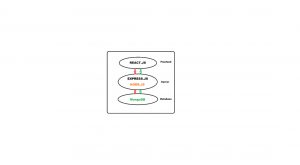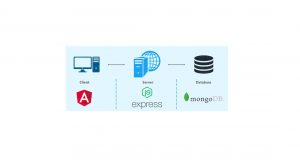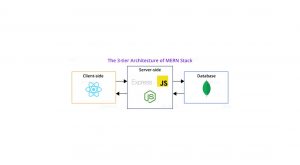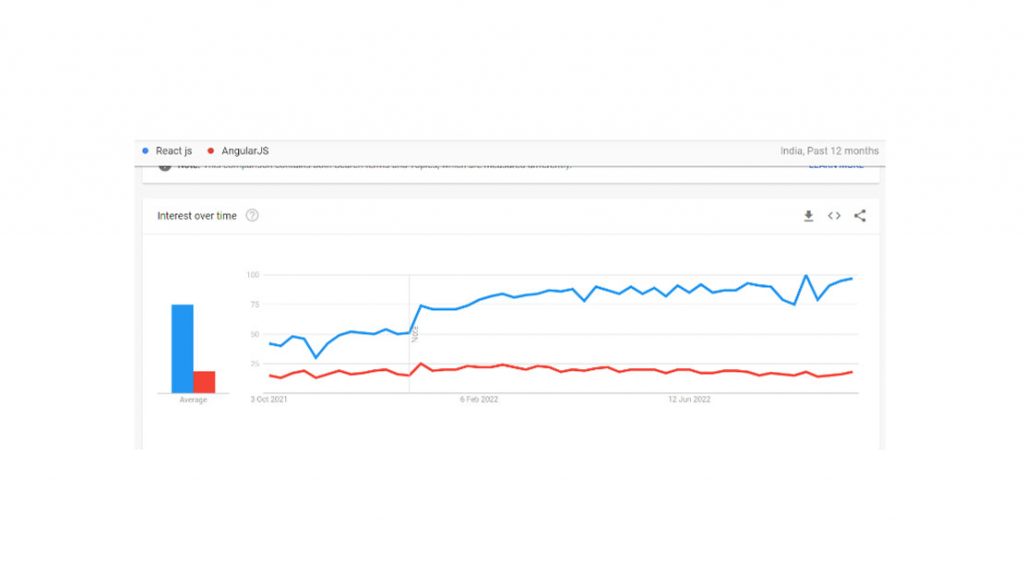In the past ten years, the development of application stacks has reached whole new heights. There are two sides to any online platform we see on the Internet: One is the front end, which consists of the site design and interface and is a display of data that the user sees. To handle the data that users view on the front end, the backend works in the background. The database and server-side code make up the backend. On the other side, the technological stack uses a collection of frameworks and tools to create software that performs effectively.
A popular method of web development is MEAN Stack. It could be described as a group of JavaScript-based Web Development tools that help developers create reliable applications and websites. MEAN is a JavaScript framework that is free and open-source and has many integrated testing tools.
Working of MEAN Stack

Components of MEAN Stack
| MongoDB | Express.js | Angular.js | Node.js |
| NoSQL document-based backend database | Backend web application framework for APIs | An open-source frontend JavaScript framework for a user interface | JavaScript-based run-time execution environment on the server-side |
| Stores high volume data by using documents and collection | Builds single-page, multi-page, and hybrid-page applications | To structure the web and business applications with ease, it aids the MVC design | Develops networking and server-side applications |
| Saves the data in the format of binary JSON and also Extends cloud functionalities | It is a node-based server layer that provides logic | Use the HTML syntax while expressing various syntaxes | Forms web frameworks for I/O-based web applications |
MERN Stack
A common alternative to MEAN Stack is MERN Stack, which uses React.js in place of traditional Angular.js to simplify and speed up development.
MongoDB, Express, React, and Node form the abbreviation “MERN,” which stands for a group of related technologies. Let’s examine what each of these parts does:
| MongoDB | Express.js | React.js | Node.js |
| Cross-Platform, Document-oriented scalable NoSQL database | Supports the backend framework | A front-end framework which is used for creating user interfaces | A JavaScript-based run-time environment to run the code on the server-side |
| A flexible platform that enables to create tables, schemas | It helps in designing better Web application and APIs | Creating UI components and the interface of single-page web applications | Supports Node Pack Manager |
| A simple environment setup to store the application data | Supports middleware and promotes code reusability | Quick in handling the changing data, simplifying the development of single-page and mobile applications. | Forms web frameworks for I/O-based web applications |
Working of MERN Stack

MEAN Stack vs MERN Stack
Since you are now familiar with both the MEAN Stack and the MERN Stack, let’s move on to the topic at hand: MEAN vs. MERN. You may explore the key distinctions between MEAN and MERN by viewing how their architecture is presented.


All of the following factors are combined to create a full-stack project in both MEAN and MERN. They provide JavaScript developers the chance to create full-stack apps with a user-friendly interface that makes it easy for users to browse through pages and respond to commands quickly.
| S. No | MEAN STACK | MERN STACK |
| 1 | This technology stack comprises MongoDB, Angular, Express, and Node. | This technology stack comprises MongoDB, React, Express and Node. |
| 2. | A javascript framework. | An open-source JS library. |
| 3. | Typescript language is used. | JavaScript, JSX is used. |
| 4. | Offers High productivity. | Offers low productivity. |
| 5. | It has a steep learning curve. | It offers far better documentation. |
| 6. | Helps in managing and rendering the code. | Facilitates smooth rendering. |
| 7. | The flow of data is bidirectional. | The flow of data is unidirectional. |
| 8 | Don’t support mobile applications. | Supports mobile applications. |
Popularity of MEAN and MERN in recent days
The progress of Angular versus React encourages both MEAN and MERN stacks. Some claim that comparing React JS with Angular isn’t really a good idea because they are both rather different concepts. But if both can create amazing apps, does it really matter?
Given that Angular is a full stack MVC framework and doesn’t need any other libraries to function, it appears to be a superior choice. However, whether or not React JS’s requirement for additional libraries is advantageous for your project will actually rely on its purpose. React, being an independent view library, allows you nearly unlimited options when it comes to creating user experiences. In addition, you have a lot of flexibility in deciding which libraries you want to work with.
Any particular Javascript framework’s or web technology’s level of popularity might provide valuable information and insights. You may get the answers to queries like these by looking at the below statistics:

Which is faster for app development, Angular or React?
First of all, there are just too many factors. such as a developer’s talent, the team’s collective capabilities, the degree of communication, teamwork, etc.
Second, it’s going to be difficult to say even if you take the very same competent developer and place him in the exact same project with the exact same circumstances since the delivery time can be extremely close.
Will React or Angular make it easier to grow an application?
Both Angular and React have advantages and disadvantages when it comes to scalability, but given that React performs better with larger projects, it may be preferable to consider it from the start if you want to grow your app significantly larger in the future.
Is it going to be easy to launch a project using Angular or React?
If you take Angular, it’s really simple to get started because it comes with so many amazing, ready-to-use tools and features.
Even though React doesn’t have a tonne of ready-to-use choices, it does offer excellent, detailed documentation that may help you construct a project from the ground up. It also has a fantastic community that is always willing to assist.
Before we proceed to the conclusion, do you know the popular apps built by MEAN and MERN?
Apps built by MEAN Stack
- Forbes
- YouTube
- Shutterstock
- Upwork
Apps built by MERN Stack
- Netflix
A final thought in MERN Stack vs MEAN stack
Given the variety of technology stacks available, MEAN Stack and MERN Stack provide you with functions that are identical in their work. MEAN and MERN are now equally essential in the current application development industry for carrying out their respective tasks. They are a core part of full-stack development, and their popularity is rising quickly. Both the MEAN and MERN frameworks are robust. The positioning of their structures varies, too. Your project’s requirements will let you make the best decision in this MEAN stack vs. MERN stack comparison.






Add comment